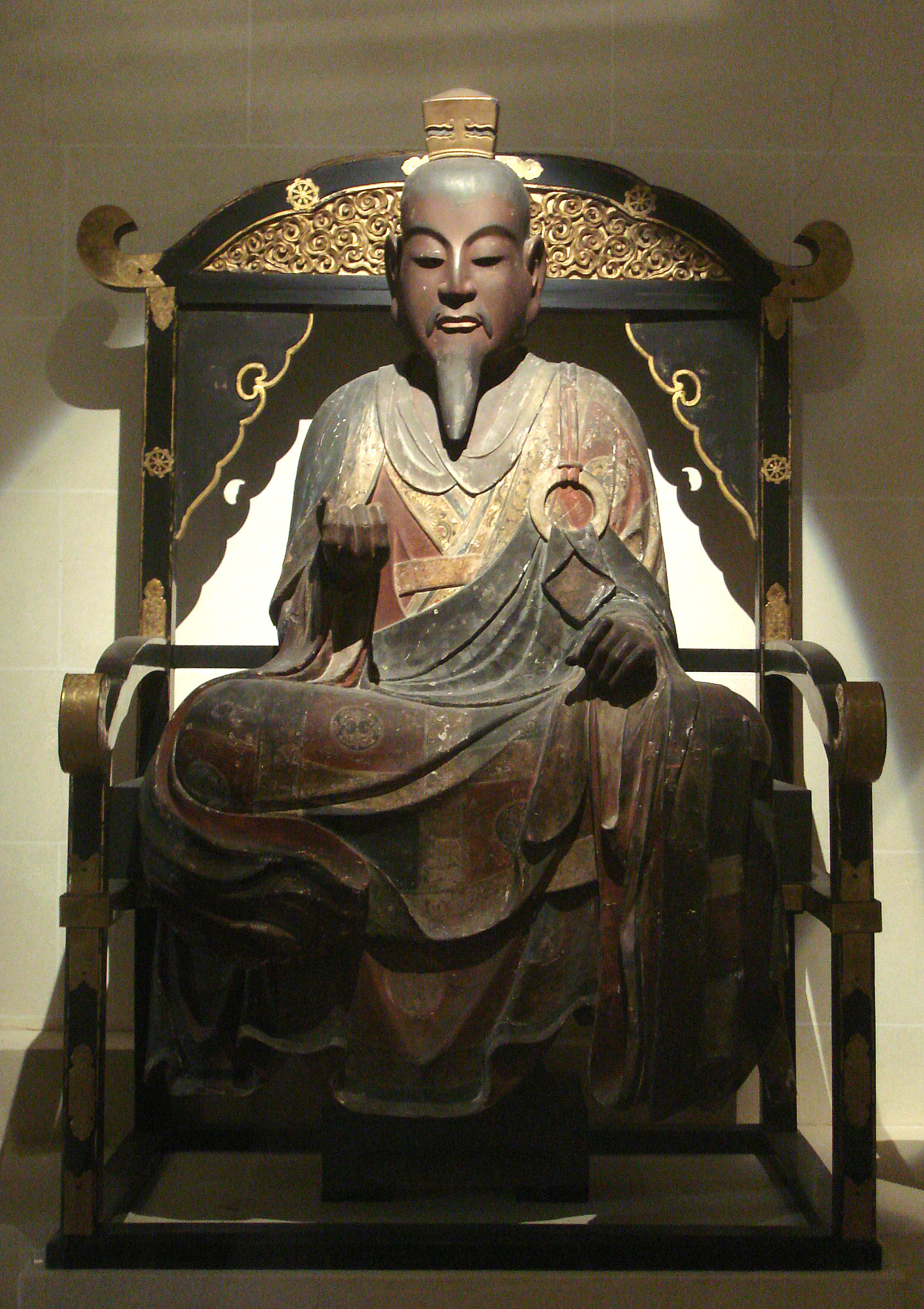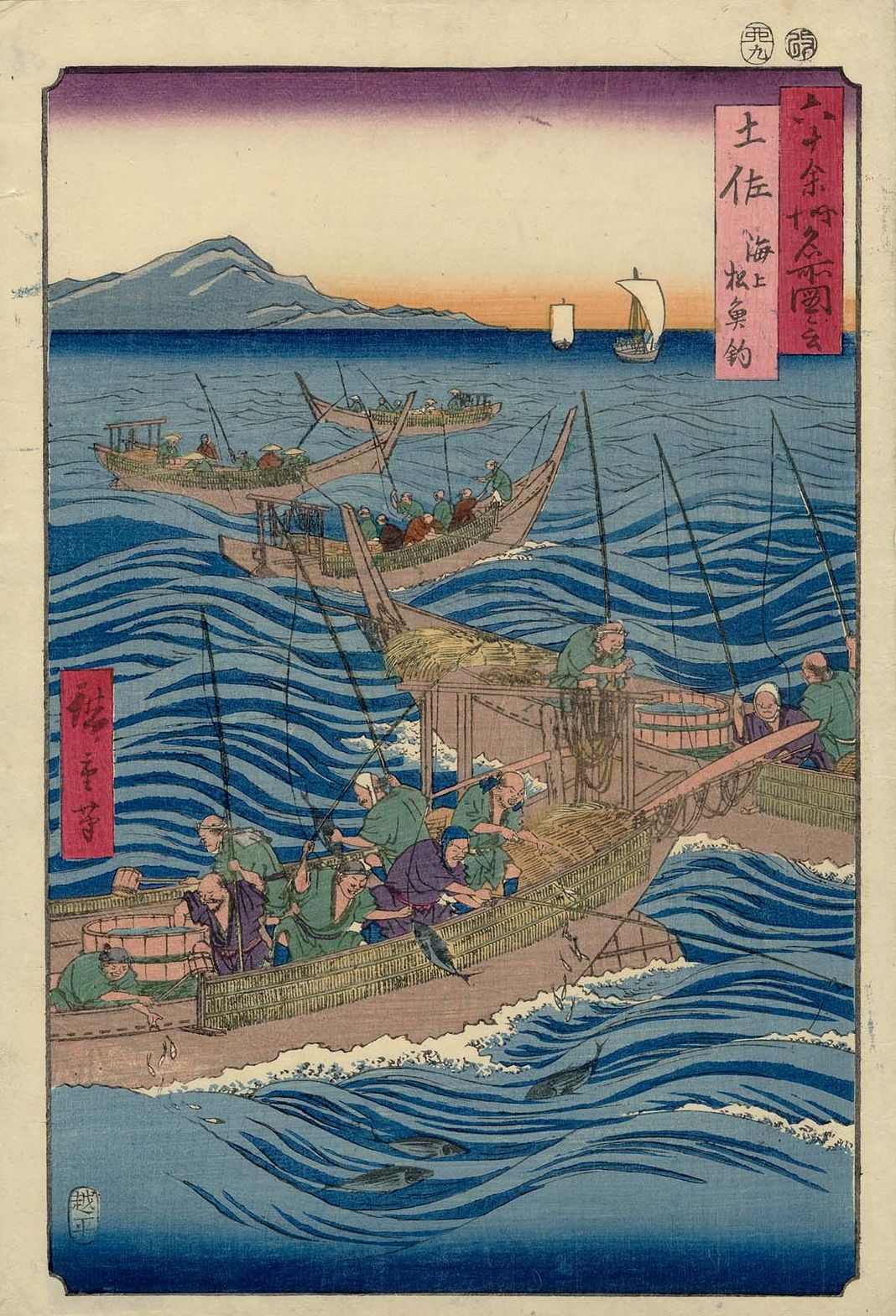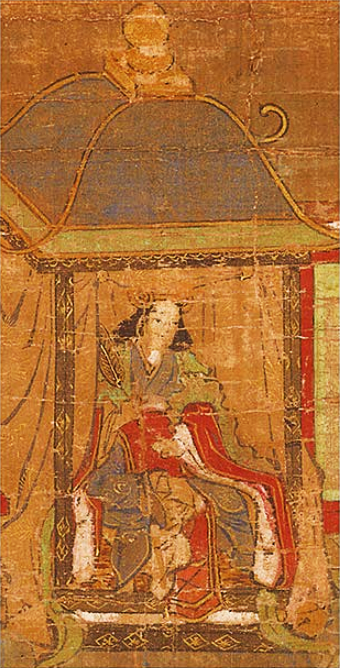|
Seson-ji
is a Buddhist temple located in the Hiso neighborhood of the town of Ōyodo, Nara Prefecture, Japan. It belongs to the Sōtō school of Japanese Zen and its ''honzon'' is a statue of Amida Nyorai. Founded by Prince Shōtoku, it is 7th of the Historical Sites of Prince Shōtoku and the temple precincts have been designated a National Historic Site of Japan in 1927. Overview Originally known as Yoshino-ji (吉野寺), the temple is one of the 48 temples said to have been built by Prince Shōtoku during his lifetime. Based on roof tiles found at the temple during archaeological excavations and the Yakushi-ji style layout of the original temple structures (including twin three-story pagodas), the foundation of the temple dates from the Asuka period (late 7th century). During the Nara period, the temple was called was called Yoshino-ji Hiso-san-ji ( 吉野寺比曽比蘇山寺), and was entrusted to the monk Dao-xuan, an immigrant from Tang China. The famous monk Shin'ei from S ... [...More Info...] [...Related Items...] OR: [Wikipedia] [Google] [Baidu] |
Historical Sites Of Prince Shōtoku
The Historical Sites of Prince Shōtoku (聖徳太子御遺跡霊場, ''Shōtoku taishi goiseki reijō'') are a group of 28 Buddhist temples in Japan related to the life of Prince Shōtoku. Directory {{DEFAULTSORT:Historical Sites of Prince Shotoku Buddhist temples in Nara Prefecture Buddhist temples in Osaka Prefecture Buddhist temples in Kyoto Prefecture Buddhist temples in Hyōgo Prefecture Buddhist pilgrimage sites in Japan Religious buildings and structures in Kyoto Prefecture Prince Shōtoku Buddhism in the Asuka period ... [...More Info...] [...Related Items...] OR: [Wikipedia] [Google] [Baidu] |
Ōyodo, Nara
280px, Ōyodo town hall is a town located in Yoshino District, Nara Prefecture, Japan. , the town had an estimated population of 15,856 in 7364 households, and a population density of 420 persons per km2. The total area of the town is . Geography Ōyodo is located on the right bank of the Yoshino River in central Nara Prefecture, almost in the center of the Kii Peninsula. Surrounding municipalities Nara Prefecture * Gojō * Gose * Shimoichi * Takatori * Yoshino Climate Ōyodo has a humid subtropical climate (Köppen ''Cfa'') characterized by warm summers and cool winters with light to no snowfall. The average annual temperature in Ōyodo is 14.0 °C. The average annual rainfall is 1636 mm with September as the wettest month. The temperatures are highest on average in August, at around 25.9 °C, and lowest in January, at around 2.4 °C. Demographics Per Japanese census data, the population of Ōyodo is as shown below History The area of Ōyodo was p ... [...More Info...] [...Related Items...] OR: [Wikipedia] [Google] [Baidu] |
Buddhist
Buddhism, also known as Buddhadharma and Dharmavinaya, is an Indian religion and List of philosophies, philosophical tradition based on Pre-sectarian Buddhism, teachings attributed to the Buddha, a wandering teacher who lived in the 6th or 5th century Before the Common Era, BCE. It is the Major religious groups, world's fourth-largest religion, with about 500 million followers, known as Buddhists, who comprise four percent of the global population. It arose in the eastern Gangetic plain as a movement in the 5th century BCE, and gradually spread throughout much of Asia. Buddhism has subsequently played a major role in Asian culture and spirituality, eventually spreading to Western world, the West in the 20th century. According to tradition, the Buddha instructed his followers in a path of bhavana, development which leads to Enlightenment in Buddhism, awakening and moksha, full liberation from ''Duḥkha, dukkha'' (). He regarded this path as a Middle Way between extremes su ... [...More Info...] [...Related Items...] OR: [Wikipedia] [Google] [Baidu] |
Tang Dynasty
The Tang dynasty (, ; zh, c=唐朝), or the Tang Empire, was an Dynasties of China, imperial dynasty of China that ruled from 618 to 907, with an Wu Zhou, interregnum between 690 and 705. It was preceded by the Sui dynasty and followed by the Five Dynasties and Ten Kingdoms period. Historians generally regard the Tang as a high point in Chinese civilisation, and a Golden age (metaphor), golden age of cosmopolitan culture. Tang territory, acquired through the military campaigns of its early rulers, rivalled that of the Han dynasty. The House of Li, Li family founded the dynasty after taking advantage of a period of Sui decline and precipitating their final collapse, in turn inaugurating a period of progress and stability in the first half of the dynasty's rule. The dynasty was formally interrupted during 690–705 when Empress Wu Zetian seized the throne, proclaiming the Wu Zhou dynasty and becoming the only legitimate Chinese empress regnant. The An Lushan rebellion (755 ... [...More Info...] [...Related Items...] OR: [Wikipedia] [Google] [Baidu] |
Fujiwara Michinaga
was a Japanese statesman. The Fujiwara clan's control over Japan and its politics reached its zenith under his leadership. Early life Michinaga was born in Kyōto, the son of Kaneie. Kaneie had become Regent in 986, holding the position until the end of his life in 990. Due to the hereditary principle of the Fujiwara Regents, Michinaga was now in line to become Regent after his brothers, Michitaka and Michikane. Career Struggle with Korechika Michitaka was regent from 990 until 995, when he died. Michikane then succeeded him, famously ruling as Regent for only seven days before he too died of disease. With his two elder brothers dead, Michinaga then struggled with Fujiwara no Korechika, Michitaka's eldest son and the successor he had named. The mother of Ichijo, Fujiwara no Senshi, coerced Ichijo into granting Michinaga the title of Nairan (内覧) in the fifth month of 995. Korechika's position was ruined by a scandal that took place the following year, likely arranged ... [...More Info...] [...Related Items...] OR: [Wikipedia] [Google] [Baidu] |
Agarwood
Agarwood, aloeswood, eaglewood, gharuwood or the Wood of Gods, commonly referred to as oud or oudh (from , ), is a fragrant, dark and resinous wood used in incense, perfume, and small Woodworking, hand carvings. It forms in the heartwood of ''Aquilaria'' trees after they become infected with a type of ''Phaeoacremonium'' mold, ''P. parasitica''. The tree defensively secretes a resin to combat the fungal infestation. Prior to becoming infected, the heartwood mostly lacks scent, and is relatively light and pale in colouration. However, as the infection advances and the tree produces its fragrant resin as a final option of defense, the heartwood becomes very dense, dark, and saturated with resin. This product is harvested, and most famously referred to in cosmetics under the scent names of ''oud'', ''oodh'' or ''aguru''; however, it is also called ''aloes'' (not to be confused with the succulent plant genus ''Aloe''), ''agar'' (this name, as well, is not to be confused with the e ... [...More Info...] [...Related Items...] OR: [Wikipedia] [Google] [Baidu] |
Tosa Province
was a province of Japan in the area of southern Shikoku. Nussbaum, Louis-Frédéric. (2005). "''Tosa''" in . Tosa bordered on Awa to the northeast, and Iyo to the northwest. Its abbreviated form name was . In terms of the Gokishichidō system, Tosa was one of the provinces of the Nankaidō circuit. Under the '' Engishiki'' classification system, Tosa was ranked as one of the "middle countries" (中国) in terms of importance, and one of the "far countries" (遠国) in terms of distance from the capital. The provincial capital was located in what is now the city of Nankoku. The '' ichinomiya'' of the province is the Tosa shrine located in the city of Kōchi. retrieved 2011-08-09 [...More Info...] [...Related Items...] OR: [Wikipedia] [Google] [Baidu] |
Empress Suiko
(554 – 15 April 628) was the 33rd monarch of Japan,Imperial Household Agency (''Kunaichō''): She introduced Buddhism in Japan and built many Buddhist temples, but she held the balance between Buddhism and Shintoism. Under her rule, Japan was the superpower in Asia, Silla paid tribute to Japan. She also reorganized the legal system and laws, bringing a peaceful era in the country. She is credited with building Japan's infrastructure, economy and culture. Empress Suiko was noted for her wisdom as a ruler推古天皇 (33)/ref> and the country's first and longest-reigning empress regnant, according to the traditional order of succession. Suiko reigned from 593 until her death in 628. Traditional narrative Before her ascension to the Chrysanthemum Throne, her personal name (her ''imina'') was Mikekashiya-hime-no-mikoto, also Toyomike Kashikiya hime no Mikoto. Empress Suiko had several names including Princess Nukatabe and (possibly posthumously) Toyomike Kashikiya. She was a ... [...More Info...] [...Related Items...] OR: [Wikipedia] [Google] [Baidu] |
Izumi Province
:''The characters ''泉州'' are also used for the name of the Chinese city of Quanzhou''. was a Provinces of Japan, province of Japan in the area of southern Osaka Prefecture. It bordered on Kii Province, Kii to the south, Yamato Province, Yamato and Kawachi Province, Kawachi to the east, and Settsu Province, Settsu to the north. Its abbreviated form name was . In terms of the Gokishichidō system, Izumi was one of the provinces of the Kinai circuit. Under the ''Engishiki'' classification system, Izumi was ranked as one of the "inferior countries" (下国) in terms of importance. The provincial capital was located in the Fuchi neighborhood of what is now the city of Izumi, Osaka, Izumi. The ''ichinomiya'' of the province is the Ōtori taisha also located in Sakai. History Early history According to the ''Shoku Nihongi'', the Izumi District, Izumi and Hine Districts were separated from Kawachi Province on 23 April 716; moreover, on 8 May that same year, the Ōtori District ... [...More Info...] [...Related Items...] OR: [Wikipedia] [Google] [Baidu] |
Camphor
Camphor () is a waxy, colorless solid with a strong aroma. It is classified as a terpenoid and a cyclic ketone. It is found in the wood of the camphor laurel (''Cinnamomum camphora''), a large evergreen tree found in East Asia; and in the kapur tree (Dryobalanops, ''Dryobalanops'' sp.), a tall timber tree from South East Asia. It also occurs in some other related trees in the Lauraceae, laurel family, notably ''Ocotea usambarensis''. Rosemary leaves (''Rosmarinus officinalis'') contain 0.05 to 0.5% camphor, while camphorweed (''Heterotheca'') contains some 5%. A major source of camphor in Asia is Ocimum kilimandscharicum, camphor basil (the parent of African blue basil). Camphor can also be synthetically produced from oil of turpentine. The compound is Chirality (chemistry), chiral, existing in two possible enantiomers as shown in the structural diagrams. The structure on the left is the naturally occurring (+)-camphor ((1''R'',4''R'')-bornan-2-one), while its mirror image show ... [...More Info...] [...Related Items...] OR: [Wikipedia] [Google] [Baidu] |
Emperor Kinmei
was the 29th emperor of Japan,Imperial Household Agency (''Kunaichō'') 欽明天皇 (29) retrieved 2013-8-22. according to the traditional order of succession. Titsingh, Isaac. (1834)pp. 34–36 Brown, Delmer. (1979) ''Gukanshō,'' pp. 261–262; H. Paul Varley, Varley, H. Paul. (1980). pp. 123–124 Ponsonby-Fane, Richard. (1959). ''The Imperial House of Japan,'' p. 45. His reign is said to have spanned the years from 539 to 571. Most historians support either the view that Kinmei is the first historically verifiable Japanese emperor or the view that Yuryaku (the 21st) is. Traditional narrative Kinmei's contemporary title would not have been ''tennō'', as most historians believe this title was not introduced until the reigns of Emperor Tenmu and Empress Jitō. Rather, it was presumably , meaning "the great king who rules all under heaven". Alternatively, Kinmei might have been referred to as or the "Great King of Yamato". Events of Kinmei's life Because of several chron ... [...More Info...] [...Related Items...] OR: [Wikipedia] [Google] [Baidu] |
Nihon Shoki
The or , sometimes translated as ''The Chronicles of Japan'', is the second-oldest book of classical Japanese history. It is more elaborate and detailed than the , the oldest, and has proven to be an important tool for historians and archaeologists as it includes the most complete extant historical record of ancient Japan. The was finished in 720 under the editorial supervision of Prince Toneri with the assistance of Ō no Yasumaro and presented to Empress Genshō. The book is also a reflection of Chinese influence on Japanese civilization. In Japan, the Sinicized court wanted written history that could be compared with the annals of the Chinese. The begins with the Japanese creation myth, explaining the origin of the world and the first seven generations of divine beings (starting with Kuninotokotachi), and goes on with a number of myths as does the , but continues its account through to events of the 8th century. It is believed to record accurately the latter reig ... [...More Info...] [...Related Items...] OR: [Wikipedia] [Google] [Baidu] |







